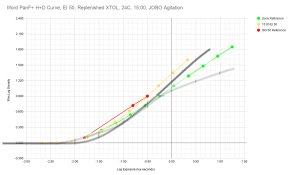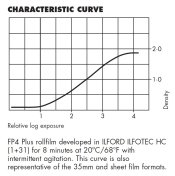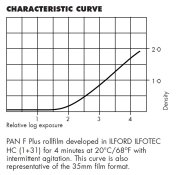Plotting can be done more easily with a pre-manufactured step tablet and contact exposure onto sheet film of the emulsion in question, and then densitometer reading the result. But that requires a true darkroom. Any stray light whatsoever ruins the accuracy of toe plotting, and acts like flashing above that. With films with high ASA sensitivity, or even slower films with a steep toe, even the luminous hands on an old fashioned darkroom timer on the other side of the room will skew the results and give you something misleading. To objectively plot and compare b&w films on the market today, you need accuracy, in ZS terms, all the way from 0 to around 12. That means plotting all the way from the fbf of the step tablet all 21 steps, which are .15 density (or half a stop) apart. That might take you beyond printable density, but does show you if and when the shoulder begins, along with other key aspects of the entire curve, and how different development regimens affect them. Don't laugh, 12 "zones" of light is not that rare in the high mtns, desert, or even out here in the redwoods when the sun is out. If Ansel Adams was Moses, he didn't quite get the job done with only 8 commandments or Zones. Pan F obeys only five of them. ... You could probably rig up a little black flocking removable booth between the enlarger lens mount and the baseboard, with sleeve opening cannibalized from a film tent, and do contact frame step tablets tests within that.





